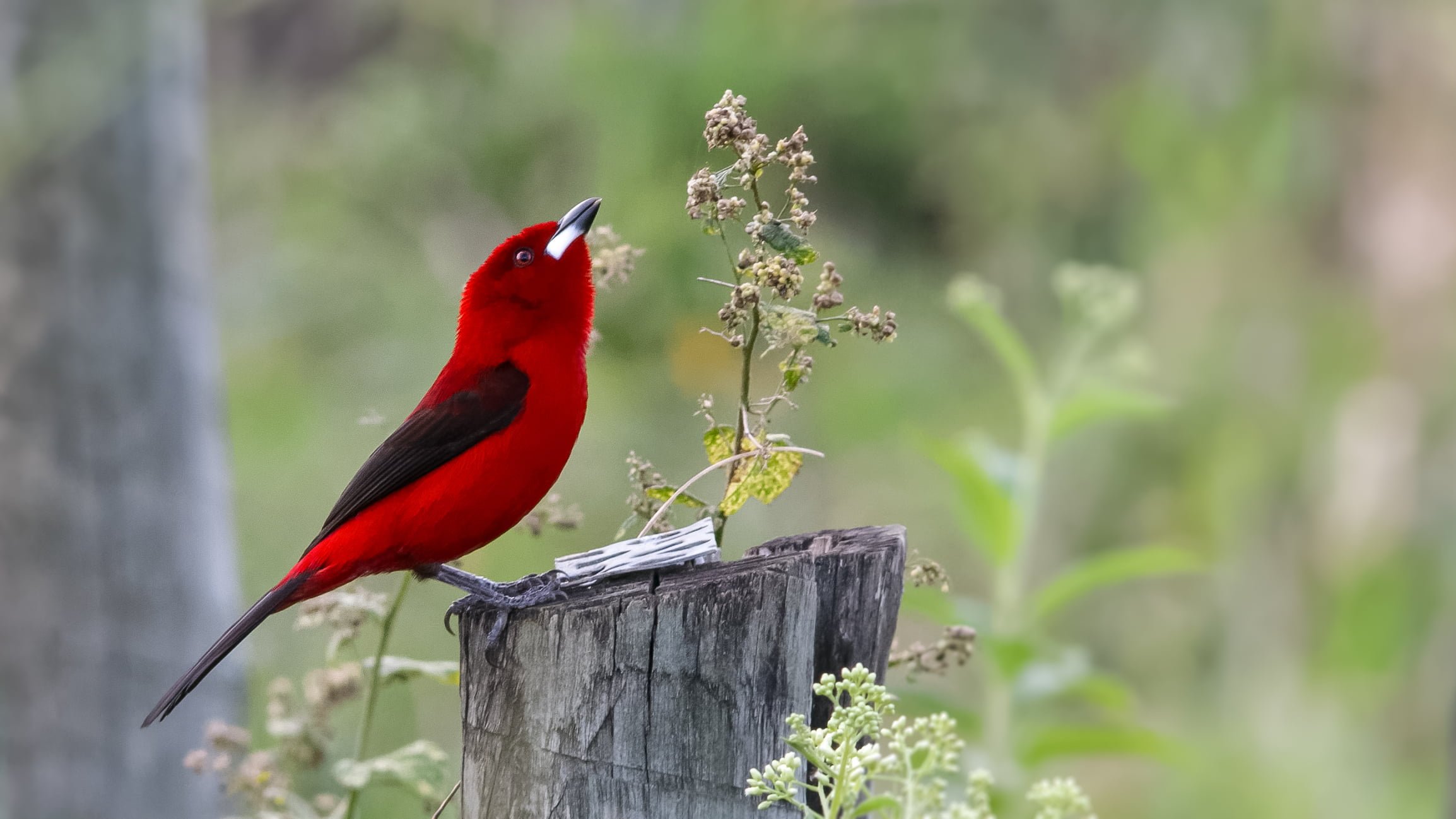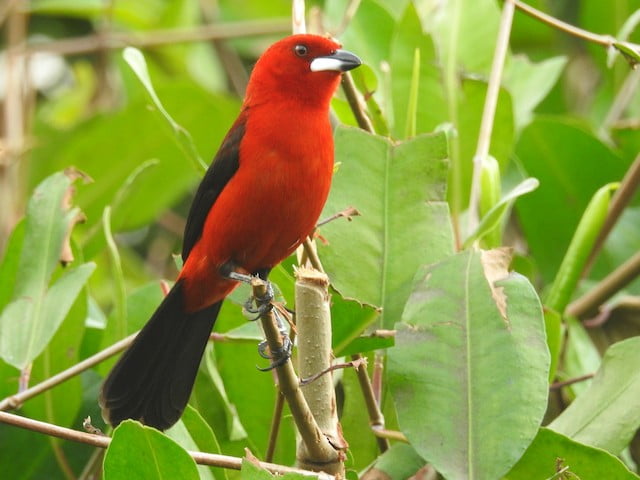The Brazilian tanager (Ramphocelus bresilius) is a species of bird in the Thrupidae family. It is endemic to eastern Brazil and far northeastern Argentina, occurring in coastal areas from Paraíba south to Santa Catarina and Misiones.

Swedish naturalist Carl Linnaeus described the Brazilian tanager in 1766 in the twelfth edition of his Systema Naturae. This species of bird is now placed in the genus Rhamphocellus, which was introduced in 1805 by the French zoologist Anselme Gaitan Desmarest.

The Brazilian tanager bird is a common member of its family. The plumage and wings of the male bird are light black and the tail is bright black. The breast and underparts of female tanagers are grayish-brown and brownish-red.

You can easily see it in the natural environment of South America. This species of bird is more common where there is enough food available.
One of the characteristics of the Brazilian tanager is its aggressive behavior towards other species of birds. Not dense forests or jungles but scrubby areas are known as their habitat.
This bird can be found in coastal areas, wetlands, gardens and city parks. However, scientists do not consider the Brazilian tanager as an endangered species. This species of bird survives by eating fruits, seeds and insects.
